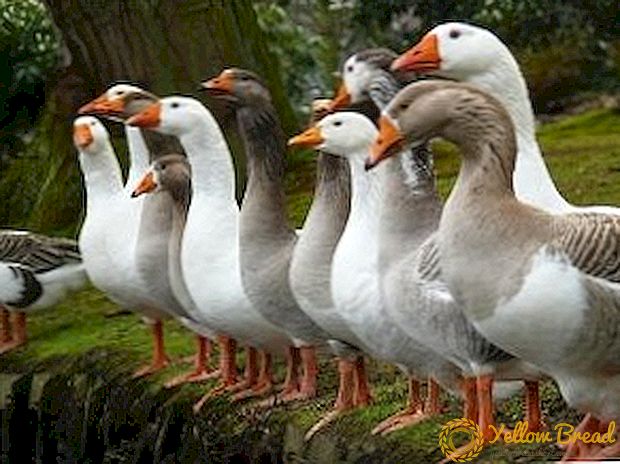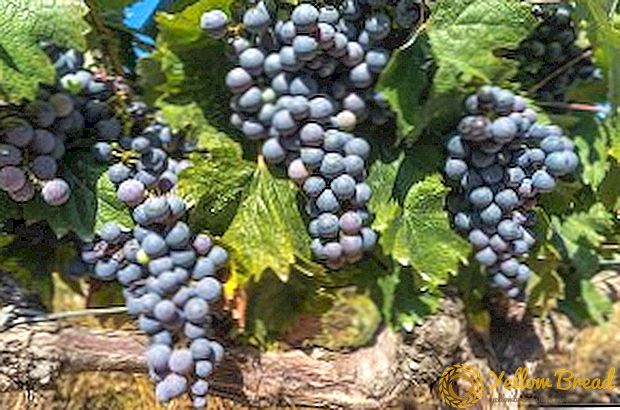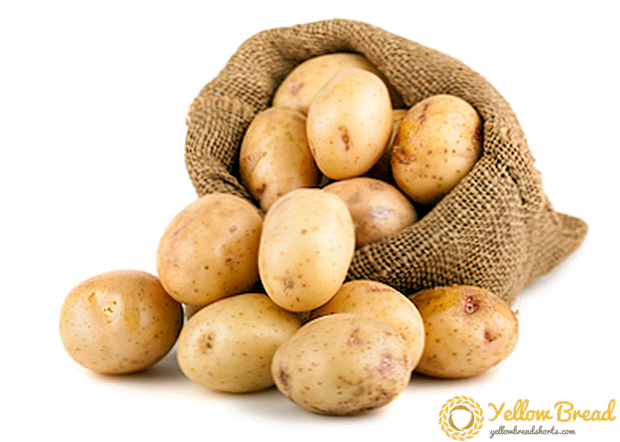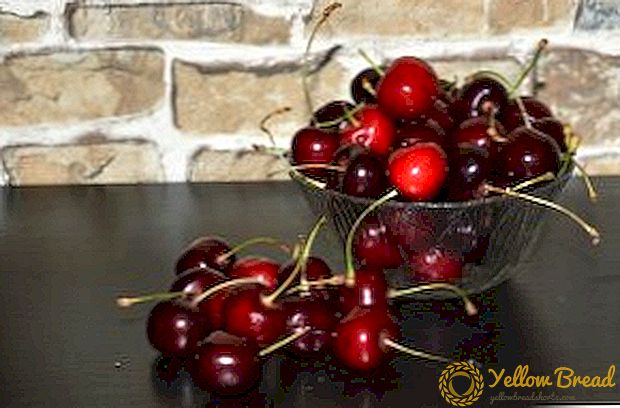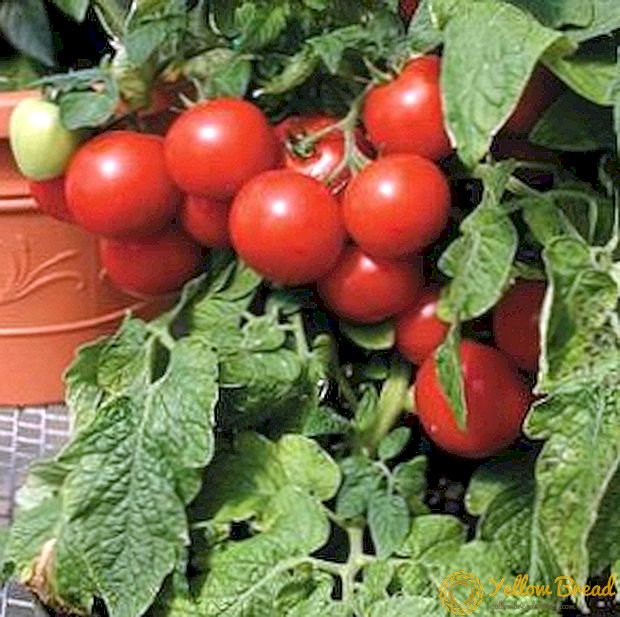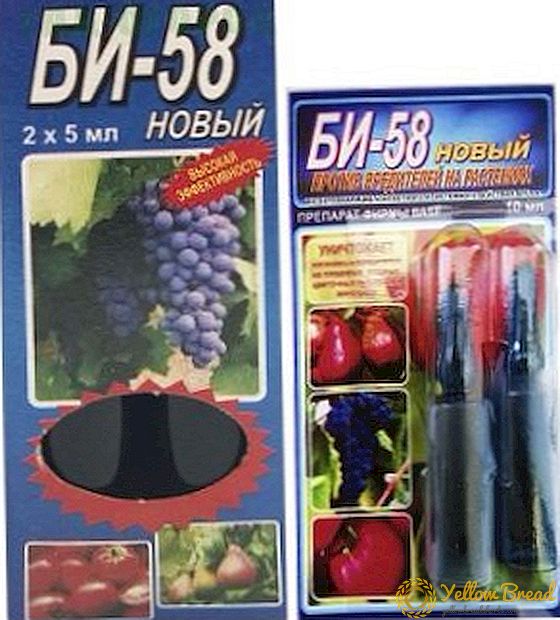 The question of the choice of fertilizers does not lose relevance for gardeners. But it’s not easy to buy the right product - there are a lot of them on the market, and not everyone can figure it out.
The question of the choice of fertilizers does not lose relevance for gardeners. But it’s not easy to buy the right product - there are a lot of them on the market, and not everyone can figure it out.
The main requirements remain the same: top dressing should stimulate yield and not overdry the soil.
We learn more about one of these compositions, considering what constitutes the “Double Superphosphate” and what useful properties its formula hides.
- Description and composition
- Advantages over others
- Where applicable
- For what crops is suitable
- Application rates
Description and composition
This fertilizer is obtained by the action of sulfuric acid on natural raw materials (actually phosphates). In general, the production looks like this: raw materials are decomposed at temperatures above +140 ° C, after which granulation is carried out, followed by drying in a special drum.
In order to "squeeze" the maximum of useful properties and increase the shelf life, the resulting mass is treated with ammonia or chalk.
The result is a composition, the main active element of which is monohydrate calcium dihydroorthophosphate. Chemists designate it as Ca H2O4 with the indispensable addition of H2O. 
Already in this formula, you can see the difference from the standard superphosphate - "double" does not contain calcium sulphate admixture (and it acts as a ballast, increasing the weight).
In these gray color granules contains:
- phosphorus (43-55%);
- nitrogen (up to 18%);
- calcium (14%);
- sulfur (5-6%).
- microcomponents in the form of manganese (2%), boron (0.4%), molybdenum (0.2%) and zinc with iron (0.1% each). The share of other elements is an order of magnitude less.
It dissolves well in water (due to the absence of gypsum), although not always willingly. On the other hand, this inconvenience is offset by a number of useful qualities. 
Advantages over others
This fertilizer is attractive because:
- does not contain "binding" ballast;
- better stimulates growth;
- thanks to nitrogen, the number of ovaries on plants increases, and this is already the prospect of a greater yield;
- sulfur "tones up" seedlings, increasing their vitality. When used for grain crops, cereals more actively accumulate protein (and in oily species, seeds become fatter);
- not a highly toxic compound;
- the granules do not clot, which is convenient for long-term storage.
The list is impressive, and the arguments are quite weighty. But any fertilizer, including double superphosphate, will be useful only if you comply with all requirements, which are reminiscent of instructions for use.
Where applicable
The fertilizer has no dangerous contraindications and is allowed for use both in small gardens and in fields where cereals are grown industrially.
A separate topic - compatibility with different types of soils. For chernozem, a moderate dosage is recommended for infrequent treatments. Weaker alkaline soils will more readily accept an extra dose of such a “drug”.
But in the case of acidic soils it is necessary to take less, because phosphorus in combination with calcium strongly oxidizes the fertile layer.  The “double” is not used on too saline areas - phosphate can simply not dissolve. The concentrate can be used several times per season.
The “double” is not used on too saline areas - phosphate can simply not dissolve. The concentrate can be used several times per season.
The main application is in April or September. In this case, the tool is placed shallowly, at the level of the seeds. In case of surface application, digging is obligatory (otherwise, phosphorus is unevenly absorbed in the area).
In May, when sowing and planting, basic feeding is done - the granules are put in the right quantity in the hole, at the same depth as the seedlings.
As required, the current treatment is carried out, if the ovary is weakened or the leaves become unhealthy purple hue. This is where nitrogen comes in, which has a beneficial effect on the vegetative system. 
For what crops is suitable
The list of "customers" of this tool is very wide, it includes almost all cultivated varieties of vegetable, fruit and grain plants.
On top dressing excellent response:
- cucumbers;
- tomatoes;
- cabbage;
- carrot;
- pumpkin;
- beans;
- raspberries and strawberries;
- Apple tree;
- cherry;
- pear;
- grapes
Rarely, but still require phosphorus additives onion, pepper and eggplant.They can also add currants and gooseberries. More hardy beets, radishes and radishes lack of phosphorus is not so terrible. 
There are some nuances. If double superphosphate is taken as the main fertilizer for tomatoes or other garden plants, the application scheme is described in detail on the package. With "farming" the cultures are a bit more complicated.
For two of them (corn and sunflower) direct contact of the pellets with the seed is undesirable. They are given smaller doses (as an option, the fertilizer is added a little deeper). With other grain such problems do not arise.
Application rates
When planning such a treatment, many "mix" phosphates with other compounds. Such mixtures give a more tangible effect (of course, if you correctly calculate the proportions).  "Double" can be combined with potash fertilizers (for spring application) or with nitrogen and potash agents (for autumn procedures). It is strictly forbidden to interfere with it. with urea, lime or chalk - with them, superphosphate reacts immediately, becoming at the same time a "dummy".
"Double" can be combined with potash fertilizers (for spring application) or with nitrogen and potash agents (for autumn procedures). It is strictly forbidden to interfere with it. with urea, lime or chalk - with them, superphosphate reacts immediately, becoming at the same time a "dummy".
You can often hear the question of how to dissolve the purchased double superphosphate in ordinary water. The easiest way to add 450-500 g of the substrate in 5 liters of warm water, thoroughly mixed. Look at the liquid: if there is no sediment, it can already be used (while its presence indicates a poor-quality product).
- 120-150 g of pellets are poured into a moistened bucket of raw manure;
- mix well;
- insist 2 weeks (this is mandatory).
The method is not the fastest, but still effective: phosphorus retains the nitrogen compounds contained in manure.  We turn to the norms of consumption. They depend on the time and method of making the prepared mixture, as well as a particular culture. Here everything is extremely simple:
We turn to the norms of consumption. They depend on the time and method of making the prepared mixture, as well as a particular culture. Here everything is extremely simple:
- on the "vegetable" plot or under the greens make 35-40 g / sq. m (for poor soil on the same area you can add no more than 10-12 g);
- corn needs at least 120 kg with a maximum of 170 kg (here the bill is already on hectares);
- 125-130 kg / ha will be sufficient for spring varieties;
- on the eve of autumn or spring digging, you can evenly scatter the granules over the section at the rate of 2-3 kg per "weave";
- in the autumn rifle circles of adult fruit trees in the autumn evenly pour about 0.5 kg of fertilizer with further digging;
- when planting seedlings in the wells (flush with the root) make about 3 g of this tool. Double superphosphate fertilizer is also useful for potatoes, its use is reduced to the same quantities and terms.

As you can see, the processing scheme is simple, and the results are decent. We hope this information will help you collect a record harvest. And let the visits to the cottage bring only positive!

